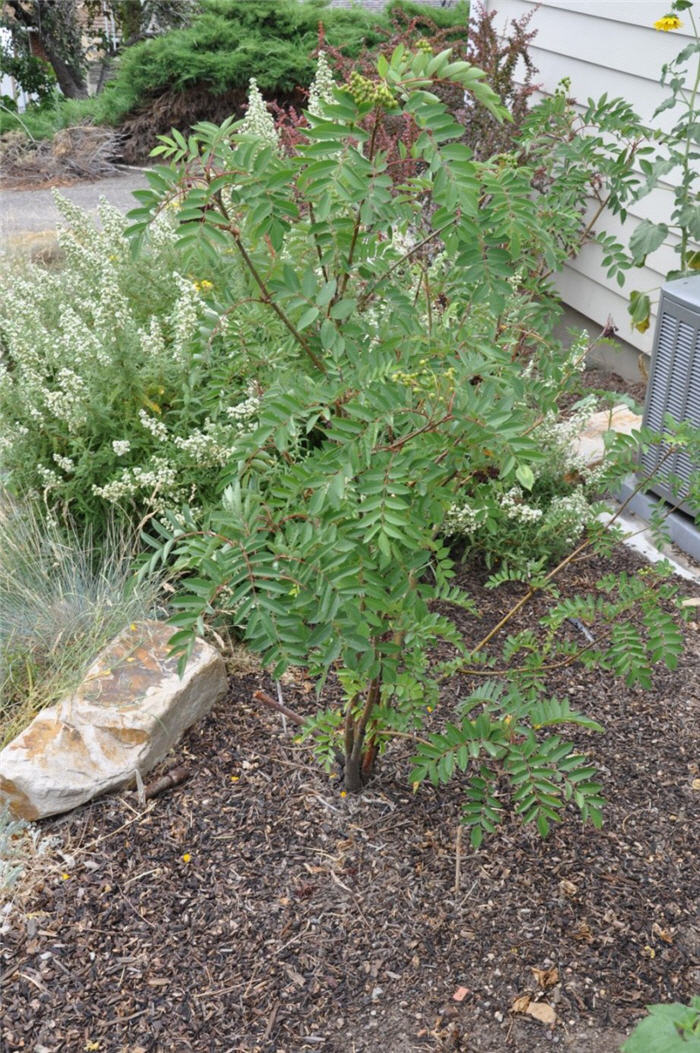| Botanical Name: Sorbus scopulina | |
| Common Name: Western Mountain Ash |

-
Anatomy
-
Culture
-
Design
Plant Type
Tree, Shrub
Height Range
6-12'
Flower Color
White
Flower Season
Spring, Summer
Leaf Color
Green
Bark Color
Brown, Grey
Fruit Color
Orange, Red
Fruit Season
Fall
Sun
Full, Half
Water
Medium, High, Extra in Summer
Growth Rate
Moderate
Soil Type
Clay, Loam
Soil Condition
Average, Rich, Well-drained, Moist
Soil pH
Neutral, Basic
Adverse Factors
Invasive, Messy
Design Styles
English Cottage, Ranch, Woodland
Accenting Features
Fall Color, Showy Flowers, Specimen
Seasonal Interest
Spring, Summer, Fall
Location Uses
Background, Perennial Border, Shrub Border, Foundation, Patio, Walls / Fences
Special Uses
Hedge, Screen, Naturalizing, Small Spaces
Attracts Wildlife
Birds
Information by: Stephanie Duer
Photographer:
Photographer:
-
Description
-
Notes
A Rocky Mountain native, Western Mountain Ash is a deciduous, large shrub or small tree with an erect, upright, multi-stemmed habit, growing about 8 to 12 feet tall and 6 to 10 feet wide. Its flowers are white and appear in late May to June in clusters, and are followed by showy fruit that ripens orange to red September thru November. The leaves are pinnately compunded and have a ferny texture; summer color is a rich green, turning orange to red in the fall. Excellent addition to a shrub border or as an autumn focal point.
Grow in well drained, loamy soil in sun to part shade. Fruit is very attractive to birds. Not really a low water plant, but it will be happy in a shady spot with regular watering during the hottest part of the summer. This is a shrub that would do well on the north or east side of the house, tolerating the seasons of deep shade and the part sun during the summer months. This plant spreads by underground suckers, forming dense thickets. Prune to the ground after flowering, or prune selectively.